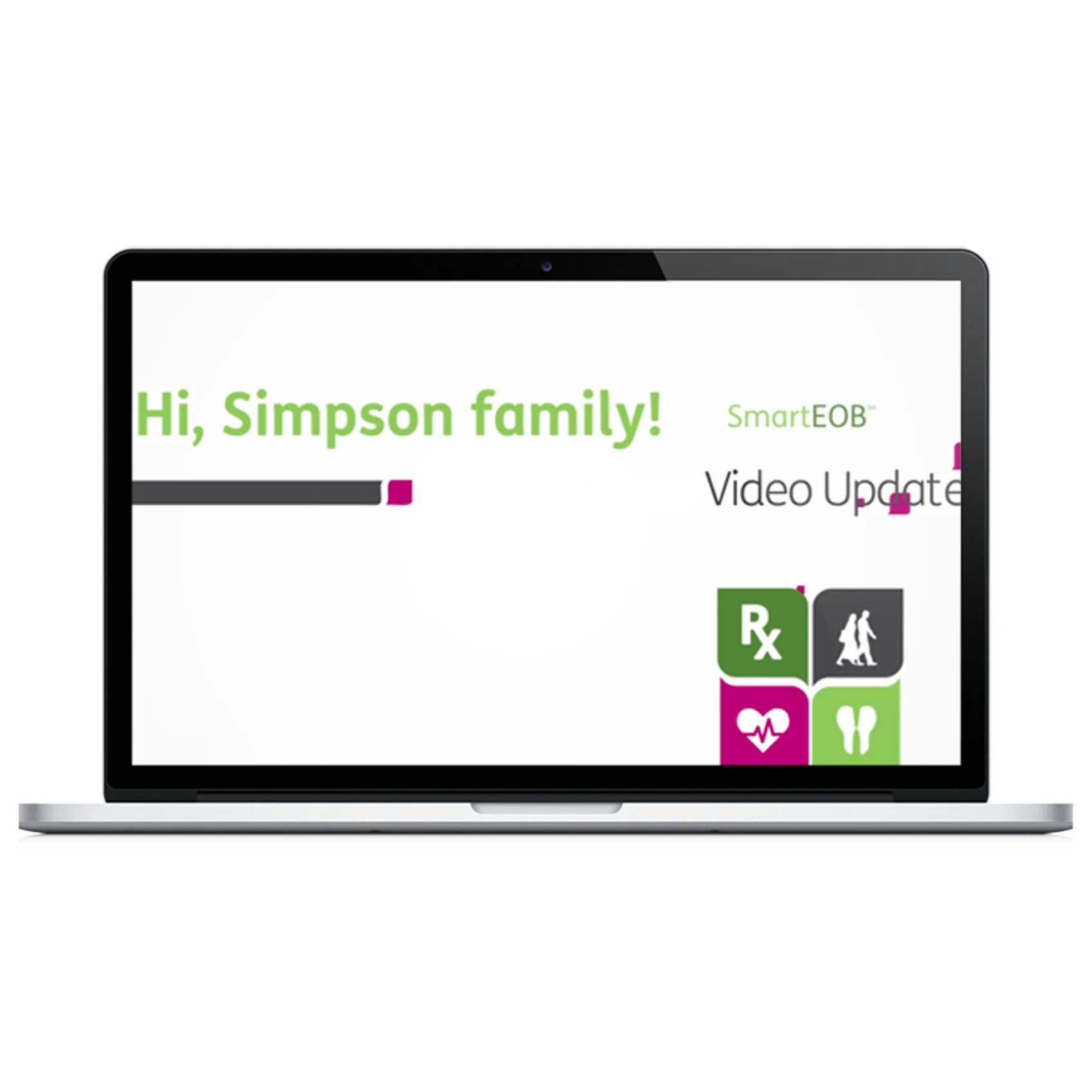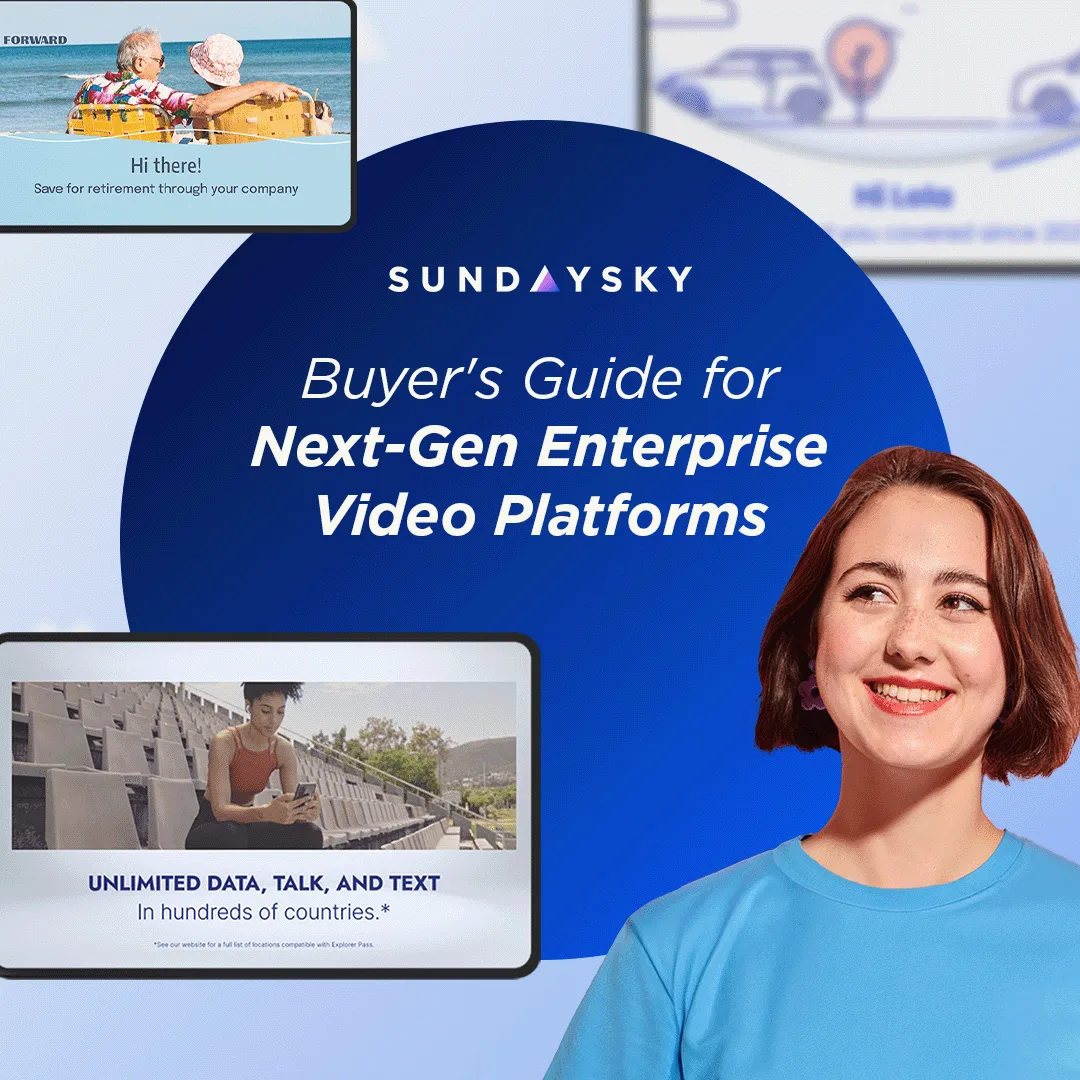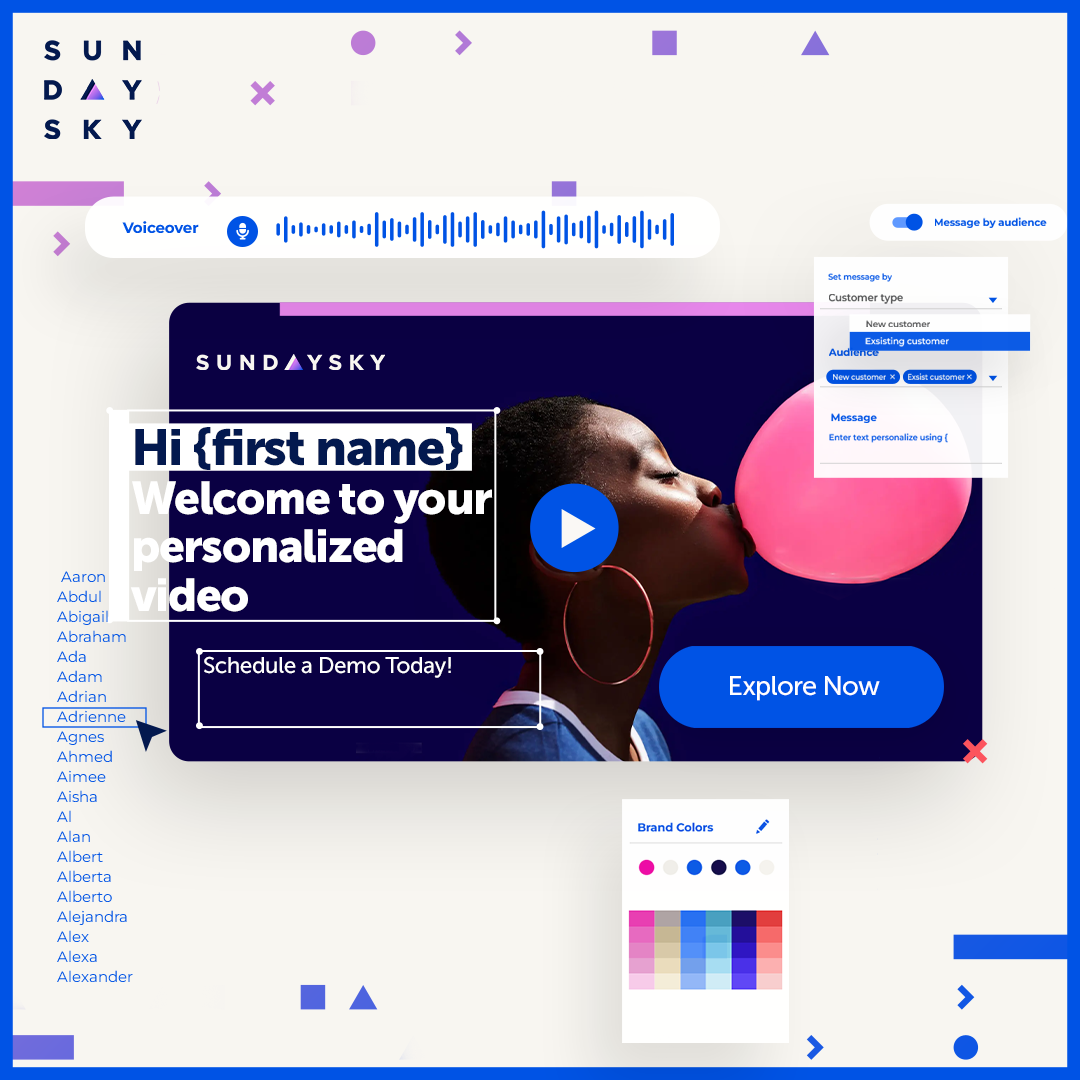Ninety-seven percent of IT budget decision-makers in the US insurance industry agree: technology is critical to serve and support customers, stated a 2012 Forrester trend report. This is especially true for customer-centric insurers looking to enhance and differentiate the customer experience while simultaneously reducing care costs. Enter the smart explanation of benefit (EOB) video.
Like other insurance and financial sectors, healthcare communication is heavy in legal jargon and fine print, difficult to understand, missing a personal touch, and generally lackluster. Most of the time, this communication will fall to the bottom of an email inbox or tossed in the trash bin.
By applying SmartVideo to a standard explanation of benefits statement, healthcare insurance providers can present a far more engaging and effective customer communication. Here are three ways smart EOB videos can best deliver value for healthcare insurance providers:
1. For easily digestible, consumer-friendly communications.
Companies today constantly compete for the customer’s attention, and in return, consumers expect digital and personal interactions at every brand touch point. Especially in the healthcare insurance industry, “where many communications are delivered from government agencies and are not the most consumer-friendly format, providers can look to more engaging solutions such as smart video,” stated Chris Nicholson, vice president of strategic consultancy at Humana, at this year’s SmartVideo Summit.
Visually walking an individual through the amount paid by the plan versus what the patient paid is much better delivered via an engaging medium such as video. Of course, personalized video statements are designed to act as a supplement rather than replace a text document, but as Nicholson puts it, “We live in this YouTube-type environment where everybody wants the 60-second commercial video for everything, so if you can catch them and create that retention of information in alternate channels, you may have success.”

2. For cross-telling (versus cross-selling) value-added services.
Smart EOB videos allow for targeted call-to-action opportunities that further educate healthcare members, while benefiting the provider, too. For instance, a smart video could leverage a patient’s electronic health record (EHR) and suggest a lower-cost generic prescription to save the patient money (as the below sample video suggests), recommend online account enrollment or a mobile app based on the member’s usage patterns. Smart video technology can evaluate an individual’s account information, history and behavior in real time to recommend value-added services, offers or messages most relevant to the viewer.
Providers focused on cross-telling members (versus cross-selling) are positioned for differentiated and enhanced customer experiences to stay competitive. “Pulling that through to the SmartVideo channel seems very natural, and much more relevant here for a member to really see the impact,” Nichsolson has said, as Humana intends to release a smart EOB to their customers. By leveraging personalized data and delivering relevant messages to each member, healthcare organizations can provide an enhanced and beneficial experience to the customer, with an ancillary benefit to the company as well.
3. For preventing an unwanted action.
Sometimes the goal of SmartVideo is for the viewer to take action (such as in the above cross-tell messages), and sometimes the objective is to avoid an action. Similar to video bills for telcos, smart EOB videos are primed to proactively educate customers and highlight the top factors that typically drive calls to the contact center, such as statement balances or claim questions. For insurance providers, calls that can be more efficiently communicated through other channels is key to evade the inbound call, and ultimately reduce care costs.
What do you think? Do your customers struggle with text-heavy information? Does your business deliver “cross-telling” experiences? How do you reduce statement-related calls to the contact center? Feel free to share your perspective and thoughts in the comments section below.




